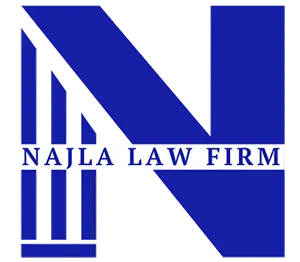Introduction
The United States offers a variety of work visa options for foreign professionals, each tailored to specific employment needs and skill levels. Understanding the available visas can help you determine the right path for working legally in the U.S. This article will cover the most common work visas, including H-1B, L-1, and O-1 visas, as well as eligibility criteria, application processes, and useful links to help streamline your journey.

1. H-1B Visa: Specialty Occupations
The H-1B visa is designed for professionals in “specialty occupations,” which generally require a bachelor’s degree or higher. It is a popular option for those in fields like technology, engineering, and finance.
- Eligibility Requirements:
- A job offer from a U.S. employer.
- A bachelor’s degree or equivalent experience.
- Relevant qualifications for the role.
- Application Process:
- Labor Condition Application (LCA): The employer files an LCA to ensure wage compliance.
- Petition Filing: Employers file Form I-129 on behalf of the employee.
- H-1B Lottery (if applicable): As there’s a cap on H-1B visas, a lottery process may apply.
2. L-1 Visa: Intracompany Transfers
The L-1 visa is tailored for employees transferring from an international branch to a U.S. branch of the same company. It is particularly relevant for managerial and specialized knowledge positions.
- Types of L-1 Visas:
- L-1A: For managers and executives.
- L-1B: For employees with specialized knowledge.
- Eligibility Requirements:
- The applicant must have worked for the company abroad for at least one continuous year within the last three years.
- A qualified job offer in the U.S. from the same employer.
- Application Process:
- The employer files Form I-129 on behalf of the employee, along with documentation of the employee’s role and company structure.
3. O-1 Visa: Extraordinary Ability
The O-1 visa is for individuals with extraordinary abilities in fields such as the arts, sciences, athletics, education, or business. It is highly selective and requires evidence of significant achievements.
- Eligibility Requirements:
- Demonstrated extraordinary ability in your field.
- Evidence of national or international recognition (e.g., awards, publications, etc.).
- Application Process:
- Employers must file Form I-129 along with documentation supporting the applicant’s achievements.
4. Other U.S. Work Visa Options
Besides H-1B, L-1, and O-1 visas, there are other work visas available:
- E-2 Treaty Investor Visa: For investors from treaty countries who wish to manage and develop their U.S. business.
- TN Visa (Canada and Mexico): Under the USMCA, this visa is available for Canadian and Mexican professionals.
- H-2B Visa: For temporary non-agricultural workers.
Each visa has specific requirements based on nationality, job type, and industry.
5. Key Differences Between Work Visas
To make an informed decision, it’s important to understand the differences between these visas:
| Visa Type | Who It’s For | Maximum Duration | Renewal Options |
|---|---|---|---|
| H-1B | Specialty Occupations | 3 years (renewable up to 6) | Extension based on green card application |
| L-1 | Intracompany Transfers | 1-3 years (renewable up to 7) | Renewable based on managerial/specialized role |
| O-1 | Extraordinary Abilities | 3 years (renewable indefinitely) | Based on demonstrated achievements |
6. Challenges and Solutions in Applying for U.S. Work Visas
Some applicants encounter challenges, such as:
- Document Requirements: Each visa has specific documentation needs. Consulting with an immigration attorney can ensure all forms are correctly submitted.
- Waiting Periods and Quotas: H-1B visas are subject to quotas, meaning you may need to enter the lottery if there is high demand.
7. Useful Tips for a Successful Work Visa Application
- Understand Quotas and Deadlines: The H-1B has an annual cap, so applying early increases your chances.
- Gather Complete Documentation: Ensure your application package is thorough, as incomplete forms can result in delays or denial.
- Consider Long-Term Residency Options: For many work visa holders, a green card is the next step toward permanent residency.
Conclusion
Navigating the U.S. work visa landscape can be complex, but with the right preparation and knowledge, you can find a visa that aligns with your career goals. Make sure to check current processing times and consult with a professional if necessary.

